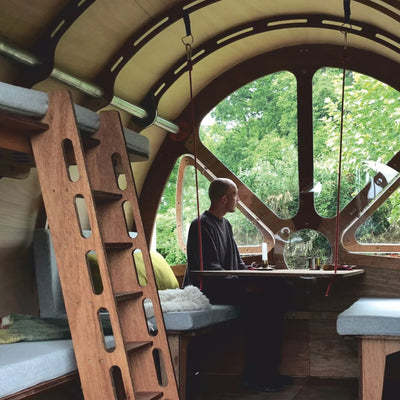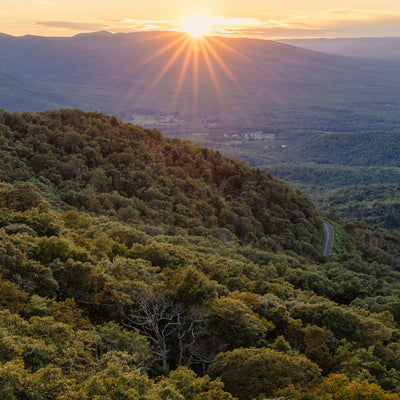Navigating the Path to Your Dream Glamping Site
Planning a luxury glamping site can feel like wading through a maze of permits, policies, and paperwork. That’s where Vicki Pettigrew, an experienced ecologist and planning consultant, steps in to help. She’s guided countless landowners through the process, and we recently visited her own glamping retreat, Big Skies, to see how she turns red tape into reality.
In this Q&A, Vicki shares her expert tips on tackling planning hurdles, budgeting smartly, and leveraging low-impact glamping cabins for sale—like our Tree Tents—to streamline approvals. Whether you’re dreaming up an eco-friendly retreat or deep in the permitting weeds, her insights can keep you on track.
 What sparked your freelance consultancy for glamping planning?
What sparked your freelance consultancy for glamping planning?
“After 15 years as an ecologist in planning departments across the UK, I’ve seen it all—from big housing projects to small rural setups,” Vicki explains. “That gave me a solid grasp of how planning works and what makes an application stick.”
“When we launched Big Skies, I saw firsthand how daunting the process can be for landowners new to it. My consultancy’s about cutting through that confusion—helping folks understand policies, spot challenges, and plan wisely. I want you to budget effectively, know when to call in experts, and feel confident building your eco-friendly glamping site.”

What are the toughest hurdles for glamping site approvals?
Vicki highlights these key challenges:
- Planning policies – Grasping national and local rules, especially in protected areas like national parks or green belts.
- Environmental impact – New U.S. regulations often require showing how your site boosts local biodiversity, not just protects it.
- Infrastructure – Access roads, parking, utilities, and waste systems need careful planning.
- Community concerns – Noise, traffic, or visual impacts can spark pushback if not addressed upfront.
- Budgeting – Misjudging costs or timing for expert help can derail even the best ideas.
 How does your ecology and planning experience simplify this?
How does your ecology and planning experience simplify this?
“My 15 years in planning departments taught me what makes or breaks an application,” Vicki says. “Environmental hurdles trip up a lot of projects, so I help landowners spot issues early—whether it’s wildlife or landscape concerns—and figure out solutions. I’m here to make it straightforward, so you know what’s possible, what’s tricky, and when to bring in extra support for your glamping cabins.”
Any myths about glamping site permits?
Vicki debunks these common ones:
“Glamping doesn’t need permits.” – Nope, any paid guest setup in the U.S. requires planning approval or a special exemption, as it changes land use to tourism.
“If it’s not protected land, it’s a breeze.” – Not quite—ecology, infrastructure, and local impact matter everywhere, not just in parks.
“I’ll just apply and see what sticks.” – A casual approach often backfires; preparation saves time, cash, and headaches.
What boosts your chances of glamping approval?
Vicki’s top tips:
- Know the rules – Research local zoning and tourism policies—does your area welcome camping cabins?
- Pick the right spot – Check access, drainage, and visibility for a sustainable setup.
- Talk early – Chat with local officials or neighbors to head off objections.
- Go green – Show how your site enhances biodiversity and fits the landscape.
- Budget smart – Plan for pros where needed, but DIY research can cut costs.

How do low-impact glamping pods like Tree Tents help?
“Our Tree Tents fit nicely into planning,” we chime in, and Vicki agrees: “Low-impact structures can ease approvals if they’re:
- Light on the land – No heavy foundations like concrete.
- Eco-friendly – Boosting local wildlife or greenery.
- Off-grid ready – Using sustainable energy and waste solutions.
- Blending in – Looking natural, not jarring.”
“Councils often favor sustainable tourism,” Vicki adds, “but you’ve got to show how it meets their rules—think wildlife harmony and easy access.” Our glamping cabins for sale are designed with this in mind, making them a smart pick.
Where should U.S. landowners start with a glamping project?
Vicki’s advice:
- Check local rules – Dig into zoning and tourism policies to avoid surprises.
- Assess your land – Look at access, slopes, and ecology for feasibility.
- Think ahead – Plan for profit and sustainability, not just permits.
- Explore options – Some eco-friendly glamping pods might qualify for exemptions through U.S. camping clubs—check local regs.
- Go green – Highlight environmental perks like off-grid setups.
- Get advice early – A pro can save you time and money upfront.
Need help with your luxury glamping site? Contact us and we're happy to offer guidance and make an intro.









